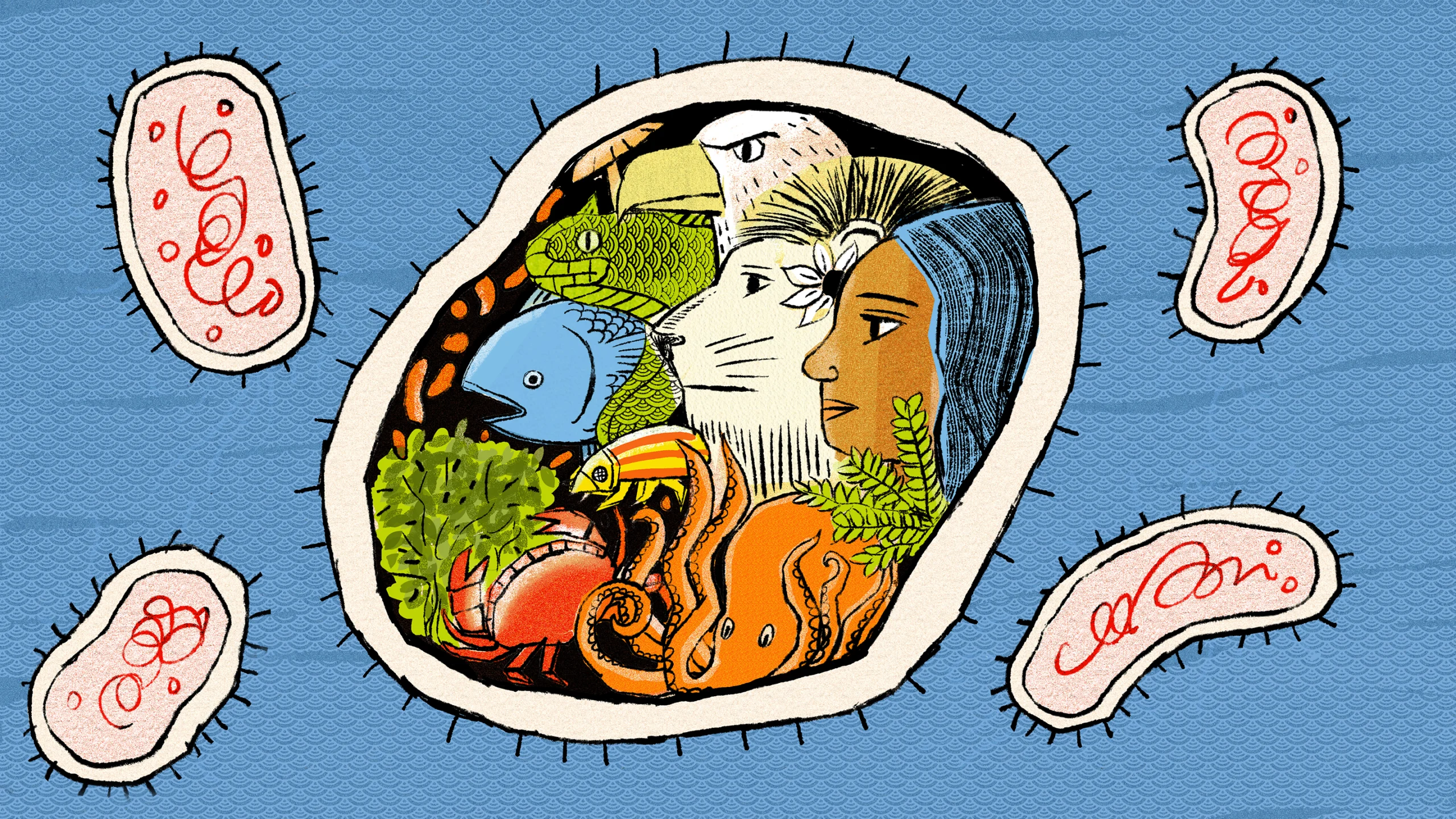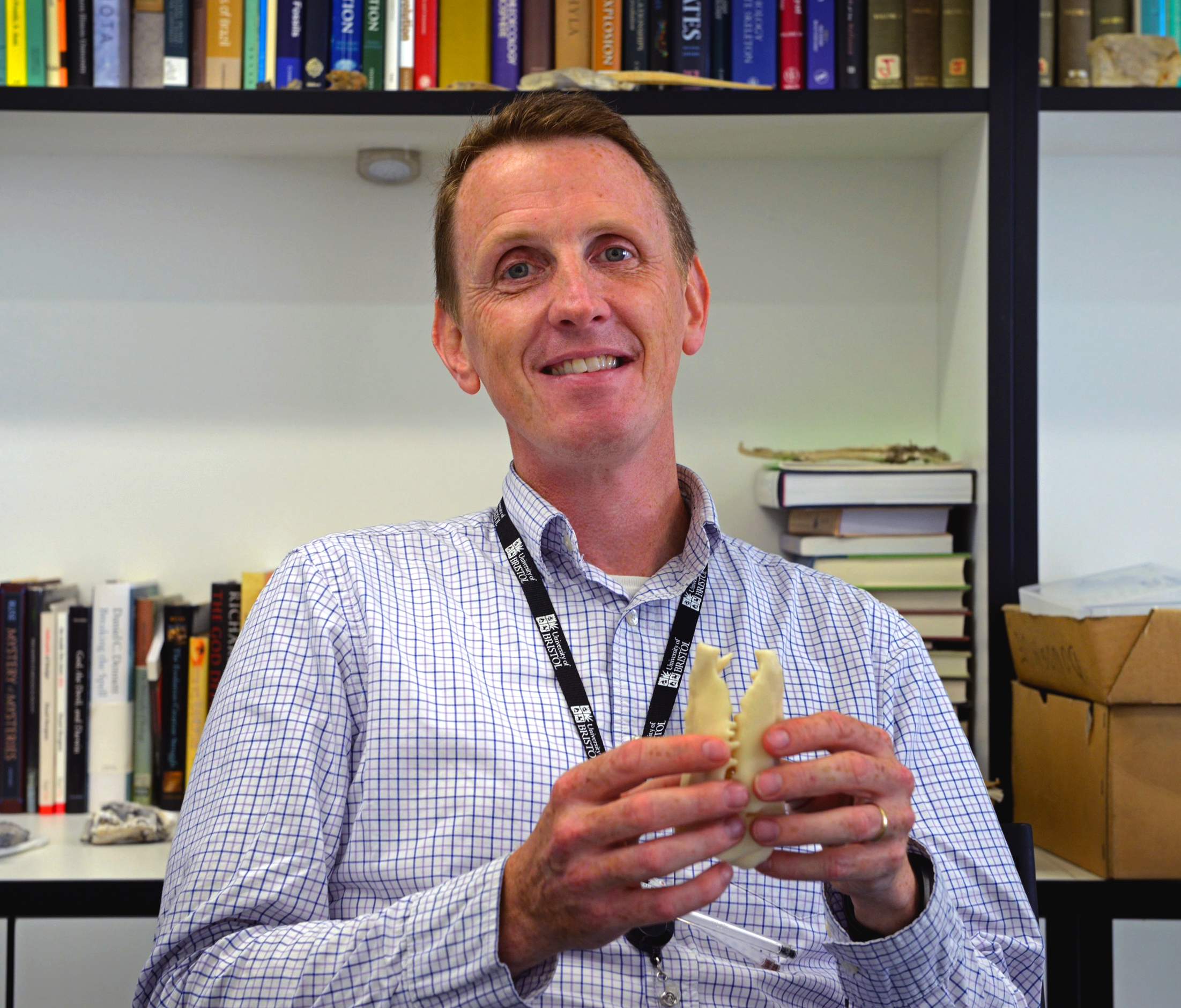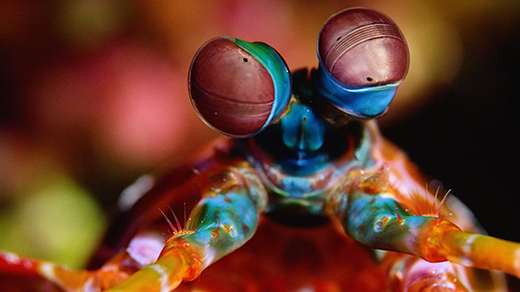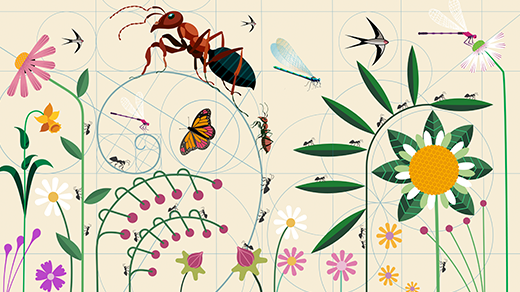All Life on Earth Today Descended From a Single Cell. Meet LUCA.

Who was the “last universal common ancestor” of all life on Earth? LUCA may have already had the core components of modern cells some 4.2 billion years ago.
Robert Neubecker for Quanta Magazine
Introduction
If you follow any path of ancestry back far enough, you’ll reach the same single point. Whether you begin with gorillas or ginkgo trees or bacteria that live deep in the bowels of the Earth — or yourself, for that matter — all roads lead to LUCA, the “last universal common ancestor.” This ancient, single-celled organism (or, possibly, population of single-celled organisms) was the progenitor of every varied form that makes a life for itself on our planet today.
LUCA does not represent the origin of life, the instance whereby some chemical alchemy snapped molecules into a form that allowed self-replication and all the mechanisms of evolution. Rather, it’s the moment when life as we know it took off. LUCA is the furthest point in evolutionary history that we can glimpse by working backward from what’s alive today. It’s the most recent ancestor shared by all modern life‚ our collective lineage traced back to a single ancient cellular population or organism.
“It’s not the first cell, it’s not the first microbe, it’s not the first anything, really,” said Greg Fournier, an evolutionary biologist at the Massachusetts Institute of Technology. “In a way, it is the end of the story of the origin of life.”
Still, understanding LUCA — whether it was simple or complex, and how quickly it emerged after life’s origin — could help answer some of our deepest questions about where we come from and whether we’re alone in the universe.
“[LUCA] tells our own story,” said Edmund Moody, an evolutionary biologist at the University of Bristol. “It gives us a point from which we can look even further back.”
For half a century, biologists have focused on different kinds of physiological, genomic and fossil evidence to paint portraits of LUCA that sometimes clash dramatically. In 2024, Moody and a team of interdisciplinary researchers, including geologists, paleontologists, system modelers and phylogeneticists, combined their knowledge to build a probabilistic model that reconstructs modern life’s shared ancestor and estimates when it lived.
The analysis, published in Nature Ecology and Evolution in July, sketched a surprisingly complex picture of the cell. LUCA lived off hydrogen gas and carbon dioxide, boasted a genome as large as that of some modern bacteria, and already had a rudimentary immune system, according to the study. Its genomic complexity, the authors argue, suggests that LUCA was one of many lineages — the rest now extinct — living about 4.2 billion years ago, a turbulent time relatively early in Earth’s history and long thought too harsh for life to flourish.

Edmund Moody, a researcher at the University of Bristol who led the new study, uses phylogenetic analysis to study the most ancient branches of the tree of life.
Wen-Tao Tao
The analysis reaches two conclusions that seem in conflict with each other, according to Aaron Goldman, who studies the molecular evolution of early life at Oberlin College and wasn’t involved in the new research. “The first is that LUCA was a complex cellular organism that likely lived in a complex ecological setting,” he said. “The second is that LUCA dates to a time that is pretty early in the history of Earth.” The results could mean that life evolved from a simple replicator into something resembling modern microbes remarkably quickly, he said. “That’s really exciting.”
“Our work suggests that those early steps of evolution weren’t hard; they’re pretty easy,” said co-author Phil Donoghue, an evolutionary biologist at the University of Bristol. “If you’re concerned with the origin of microbial-grade life, then that’s apparently very easy, and it should be quite common in the universe.”
Not all experts in the field agree, however. Some argue that a few hundred million years is not enough time for complex life to have evolved. The authors stress that their analysis is a first attempt to paint a fuller, admittedly fuzzy, picture of LUCA. “I fully expect and hope people prove us wrong in certain aspects,” said Moody, the paper’s lead author, especially if those new results offer a clearer view of the ancient ancestor of all life we know.
A Probabilistic Portrait
It’s no small task to puzzle out the nature of an entity that lived so long ago on fragmentary, inferential evidence. Microscopic fossils can get researchers part of the way, but the oldest traces of life date to only around 3.5 billion years ago, likely long after LUCA lived. That leaves LUCA’s descendants for us to study. “The way to study LUCA is to compare the diversity of genes and physiologies and metabolisms today, and then work backward,” said Fournier, who was not involved in the new work.
In the 1970s — well before the genomic era — researchers thought the last common ancestor of all life (not yet named LUCA) was quite primitive, a replicating entity that hadn’t yet mastered the ability to translate genes into proteins. But as genetic sequencing technology advanced and more genomes became available, researchers became able to look for shared genes among many different organisms to infer which are the most ancient and conserved through time.
That’s how Moody’s team started. They built an evolutionary tree representing the relationships among 350 living bacterial species and 350 archaean species. Then, they analyzed the evolutionary histories of nearly 10,000 gene families shared by those species to create an evolutionary tree for each gene.

Phil Donoghue, an evolutionary biologist at the University of Bristol, studies major evolutionary transitions by combining living and fossil evidence.
A.K. Purkiss
When we compare two closely related gene lineages, it’s natural to conclude that any shared genetic material would have been present in their common ancestor. However, that inference gets more complicated as you delve deeper in time. If one of LUCA’s genes disappeared in some later lineages, it could appear to have evolved more recently. Alternatively, a gene that evolved long after LUCA could have spread among unrelated lineages through a process known as horizontal gene transfer; in that case, a genetic analysis would make it appear as if something that arose much later had originated in LUCA. “There’s a lot of evolutionary processes that can get in the way of a clear signal,” Goldman said.
One way to isolate the signal from evolutionary noise is to select only genes and proteins that show little evidence of horizontal gene transfer. The most prominent analysis of this sort, from 2016, suggested that LUCA was a relatively simple entity that was only “half alive,” dependent on the geochemistry of hydrothermal vents for energy. However, such a conservative focus on only the most obviously shared genes and proteins could bias researchers, leading to a conception of LUCA that is too simple, Donoghue said.
So, instead of a binary, in-or-out approach, Moody and his colleagues computed the probability that a given gene was present. By comparing the gene trees to the species trees, the researchers estimated rates of horizontal gene transfer, gene loss and other evolutionary processes that could muck up the picture. At the end of the process, they assigned each gene a probability of having been part of LUCA’s genome.
“They’ve taken the best-practice approach for a single family and scaled it up,” Goldman said.
The team identified 399 gene families with a high chance of having been in LUCA, a number roughly in line with the conservative 2016 analysis. By also integrating the probabilities of thousands of other gene families, they estimated that LUCA’s genome likely encoded about 2,600 proteins — making it similar in size to the genomes of some modern-day bacteria.
Given what’s known about these proteins, “you get a picture of this fairly complex organism,” Moody said. LUCA likely existed without oxygen by converting carbon dioxide and hydrogen gas into energy. Those inputs might have come from nonliving sources, such as hydrothermal vents or atmospheric gases at the ocean’s surface.
Mark Belan/ Quanta Magazine
Mark Belan/ Quanta Magazine
Alternatively, LUCA may have dined on the chemical waste of other creatures, suggesting that it was already part of a complex ecosystem with other microbes. The analysis can’t provide direct evidence of this possible ancient ecology, since traces of such lineages are long gone. But it’s unlikely that LUCA would have evolved complexity in isolation, the authors argue. Since its metabolism is consistent with both relying on and potentially supporting other microbes, LUCA was likely part of a broader ecosystem, from which its lineage was the sole survivor.
At the very least, that ecosystem contained viruses: The researchers say LUCA likely housed 19 CRISPR genes, which bacteria use to slice up viral threats.
“We tend to think that early life is somehow simpler, less sophisticated … but I don’t think there’s any reason to think that,” said Betül Kaçar, an evolutionary biologist at the University of Wisconsin, Madison who wasn’t involved in the research. “A complex ecosystem, to me, sounds more realistic.”
Living Might Be Easy
The only remaining trace of LUCA is in the genetic code of every creature alive today. Luckily, researchers can harness a basic fact of life — it evolves — to work out how long ago LUCA lived. Genes change over time, and the ticktock of random but inevitable mutations can serve as a kind of molecular clock. By comparing the accumulated genetic changes between two lineages, researchers can estimate how long ago they split.
Researchers typically calibrate their clocks with dated fossils, using lineages that split off before the point of interest as a reference. However, the fossil record begins well after LUCA’s time. To add a pre-LUCA root to the tree and more accurately home in on its age, the researchers turned to five genes with a particularly ancient history. “It’s a clever way to bolster their results,” Goldman said.
From these genes, they estimated that LUCA lived about 4.2 billion years ago — roughly 300 million years after the moon was formed from the collision of a Mars-size planet with Earth. This was a tumultuous time in our planet’s history. It likely took 100 million or 200 million years at minimum for the planet to settle down enough to support life.
If that timeline is right, life had only a couple hundred million years to emerge and become fairly complex. LUCA and its early descendants would also have survived a period once thought too harsh for life, when Earth was continually bombarded with asteroids.
Not all scientists buy that LUCA is that old. “It’s very difficult to imagine that LUCA was living before 4 billion years ago,” said Patrick Forterre, former head of microbiology at the Pasteur Institute, who co-organized the conference where the term “LUCA” was coined. He argues that Earth would have needed more time to cool down after the moon formed, and he is skeptical that we can accurately infer the pace of evolution at the time of LUCA.
Still, 4.2 billion years is roughly in line with several other analyses. “I think LUCA is really ancient,” said Luis Delaye, a biologist at Cinvestav Irapuato, a research institute in Mexico. But Delaye isn’t wholly convinced that LUCA was as complex as the study found. He cites key differences in cell membranes and DNA replication machinery between the two branches that split from LUCA — bacteria and archaea — as evidence that LUCA may have been somewhat simpler.
Fleshing out this picture of the microbe from which everything alive on Earth today evolved will take more detailed research on individual shared genes and proteins, Delaye said, to better understand their evolutionary function. And ultimately, even a perfect reconstruction of LUCA’s biology would only tell us so much about life’s first chemical steps. “Perhaps if we push that biology as far as we can go,” he said, “chemists can fill in the gaps.”



